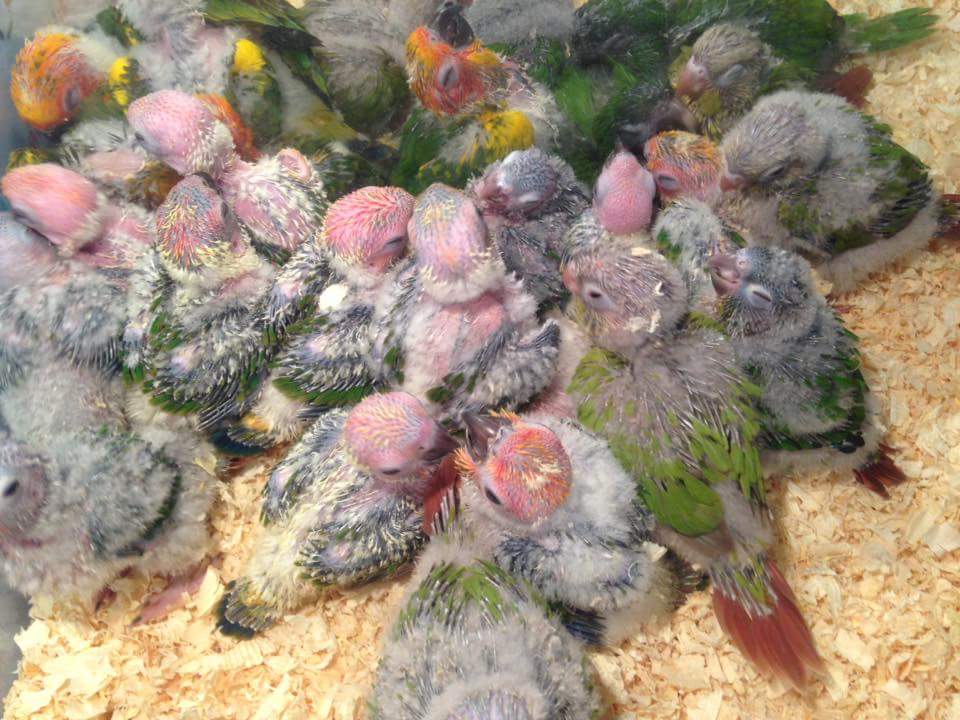Green winged macaws can be readily distinguished from the scarlet macaw. While the breast of both birds are bright red, the upper-wing covert feathers of the green-winged macaw is mostly green (as opposed to mostly yellow, or a strong mix of yellow and green in the scarlet macaw). In addition, the green-winged macaw has characteristic red lines around the eyes formed by rows of tiny feathers on the otherwise bare white skin patch; this is one of the biggest differences from a scarlet macaw to the casual viewer. Iridescent teal feathers are surrounded by red on the tail. If seen together, the green-winged macaw is clearly larger than the scarlet macaw as well.
In terms of length, this species is second only in size to the hyacinth macaw, the largest of the macaws. The red-and-green macaw attains a total body length of 90 to 95 cm (35 to 37 in) in adults. Twelve adults were found to average 1,214 g (2.676 lb). A weight range of between 1,050 and 1,708 g (2.315 and 3.765 lb) has been reported.
Behavior Of Green Winged Macaws
The green winged macaws generally mates for life. The female typically lays two or three eggs in a nest made in a hole in a tree. The female incubates the eggs for about 28 days, and the chicks fledge from the nest about 90 days after hatching.
Temperament
Green wing macaws are tame and affectionate with a usually even, easy-going disposition. They are friendly and require a couple of hours of interaction with you every day. These birds are brilliant; they can learn to speak words and do tricks.
As one of the largest species of parrot, they have incredibly powerful beaks. Although they are among the most gentle parrots, a green-wing macaw with behavior problems can be a biting hazard for families with little children (and little fingers). Most species of parrots will develop behavioral issues if they do not get sufficient attention from you or their human flock.






